Uterine Metabolomic Analysis for the Regulation of Eggshell Calcification in Chickens
Abstract
1. Introduction
2. Results
2.1. Comparisons of Eggshell Quality Traits
2.2. Metabolite Profiles of Uterine Fluid
2.3. Identification of Differentially Present Metabolites
2.4. Putative Metabolites Potentially Participating in Eggshell Calcification
2.5. Verification of the Effects of Verapamil and Risedronate on Eggshell Quality
2.6. Verification of the Effects of cpgenIII and Biliverdin on Calcite Crystal Morphology
3. Discussion
4. Materials and Methods
4.1. Bird Management
4.2. Measurements of Egg Traits and Selection of Hens
4.3. Uterine Fluid Sampling
4.4. Sample Preparation for MS Analysis
4.5. LC-MS Analysis
4.6. Identification of Metabolites and Statistical Analysis of Data
4.7. Verification of Differential Metabolites Potentially Associated with Eggshell Quality
4.7.1. Oral Administration
4.7.2. In Vitro Calcite Crystal Growth Assay
5. Conclusions
Supplementary Materials
Author Contributions
Funding
Institutional Review Board Statement
Informed Consent Statement
Data Availability Statement
Conflicts of Interest
References
- Nys, Y.; Gautron, J.; García-Ruiz, J.M.; Hincke, M.T. Avian eggshell mineralization: Biochemical and functional characterization of matrix proteins. Comptes Rendus Palevol 2004, 3, 549–562. [Google Scholar] [CrossRef]
- Hincke, M.T.; Nys, Y.; Gautron, J.; Mann, K.; Rodriguez-Navarro, A.B.; McKee, M.D. The eggshell: Structure, composition and mineralization. Front. Biosci. 2012, 17, 1266–1280. [Google Scholar] [CrossRef]
- Ketta, M.; Tůmová, E. Eggshell structure, measurements, and quality-affecting factors in laying hens: A review. Czech J. Anim. Sci. 2016, 61, 299–309. [Google Scholar] [CrossRef]
- Nys, Y.; Hincke, M.T.; Arais, J.L.; Garcia-Ruiz, J.M.; Solomon, S.E.; Gautron, J. Avian Eggshell Mineralization. Poult. Avian Biol. Rev. 1999, 10, 143–166. [Google Scholar]
- Eastin, W.C.; Spaziani, E. On the mechanism of calcium secretion in the avian shell gland (uterus)1. Biol. Reprod. 1978, 19, 505–518. [Google Scholar] [CrossRef]
- Nys, Y.; Guyot, N. Egg formation and chemistry. In Improving the Safety and Quality of Eggs and Egg Products; Nys, Y., Bain, M., Van Immerseel, F., Eds.; Woodhead Publishing: Cambridge, UK, 2011; pp. 83–132. [Google Scholar]
- Gautron, J.; Hincke, M.T.; Nys, Y. Composition and biomineralization of the eggshell. In Proceedings of the XIVth European. Poultry Conference, Stavanger, Norway, 23–27 June 2014; pp. 271–286. [Google Scholar]
- Gautron, J.; Hincke, M.T.; Nys, Y. Precursor matrix proteins in the uterine fluid change with stages of eggshell formation in hens. Connect. Tissue Res. 1997, 36, 195–210. [Google Scholar] [CrossRef]
- Marie, P.; Labas, V.; Brionne, A.; Harichaux, G.; Hennequet-Antier, C.; Nys, Y.; Gautron, J. Quantitative proteomics and bioinformatic analysis provide new insight into protein function during avian eggshell biomineralization. J. Proteom. 2015, 113, 178–193. [Google Scholar] [CrossRef]
- Sun, C.; Xu, G.; Yang, N. Differential label-free quantitative proteomic analysis of avian eggshell matrix and uterine fluid proteins associated with eggshell mechanical property. Proteomics 2013, 13, 3523–3536. [Google Scholar] [CrossRef]
- Chien, Y.-C.; Hincke, M.; Vali, H.; McKee, M. Ultrastructural matrix–mineral relationships in avian eggshell, and effects of osteopontin on calcite growth in vitro. J. Struct. Biol. 2008, 163, 84–99. [Google Scholar] [CrossRef]
- Wang, X.; Wu, C.; Tao, K.; Zhao, K.; Wang, J.; Xu, H.; Xia, D.; Shan, H.; Lu, J.R. Influence of ovalbumin on CaCO3 precipitation during In Vitro biomineralization. J. Phys. Chem. B 2010, 114, 5301–5308. [Google Scholar] [CrossRef]
- Wang, X.; Sun, H.; Xia, Y.; Chen, C.; Xu, H.; Shan, H.; Lu, J.R. Lysozyme mediated calcium carbonate mineralization. J. Colloid Interface Sci. 2009, 332, 96–103. [Google Scholar] [CrossRef]
- Arias, J.L.; Fernández, M.S. Role of extracellular matrix molecules in shell formation and structure. World’s Poult. Sci. J. 2001, 57, 349–357. [Google Scholar] [CrossRef]
- Fernandez, M.S.; Passalacqua, K.; Arias, J.I.; Arias, J.L. Partial biomimetic reconstitution of avian eggshell formation. J. Struct. Biol. 2004, 148, 1–10. [Google Scholar] [CrossRef]
- Pipich, V.; Balz, M.; Wolf, S.E.; Tremel, W.; Schwahn, D. Nucleation and growth of CaCO3 Mediated by the egg-white protein ovalbumin: A time-resolvedin situstudy using small-angle neutron scattering. J. Am. Chem. Soc. 2008, 130, 6879–6892. [Google Scholar] [CrossRef]
- Schwahn, D.; Balz, M.; Tremel, W. Crystallization of the CaCO3 mineral in the presence of the protein ovalbumin. Phys. B Condens. Matter 2004, 350, E947–E949. [Google Scholar] [CrossRef]
- Mann, K.; Hincke, M.T.; Nys, Y. Isolation of ovocleidin-116 from chicken eggshells, correction of its amino acid sequence and identification of disulfide bonds and glycosylated Asn. Matrix Biol. 2002, 21, 383–387. [Google Scholar] [CrossRef]
- Castaldo, D.J.; Maurice, D.V. Phospholipid content of the chicken shell gland and its relationship to egg shell strength. Poult. Sci. 1988, 67, 427–433. [Google Scholar] [CrossRef]
- Castaldo, D.J.; Maurice, D.V. Characterization of shell gland lipids from chicken (Gallus domesticus) producing strong or weak egg shells. Comp. Biochem. Physiol. Part B Comp. Biochem. 1989, 94, 521–524. [Google Scholar] [CrossRef]
- Castaldo, D.J.; Maurice, D.V. Shell gland adenosine triphosphatase in hens producing strong and weak egg shells. Br. Poul. Sci. 1997, 1, 225–229. [Google Scholar] [CrossRef]
- Billah, M.M.; Anthes, J.C. The regulation and cellular functions of phosphatidylcholine hydrolysis. Biochem. J. 1990, 2, 281–291. [Google Scholar] [CrossRef]
- Newton, A.C. Protein kinase C: Structural and spatial regulation by phosphorylation, cofactors, and macromolecular interactions. Chem. Rev. 2001, 101, 2353–2364. [Google Scholar] [CrossRef]
- Mann, K.; Olsen, J.V.; Macek, B.; Gnad, F.; Mann, M. Phosphoproteins of the chicken eggshell calcified layer. Proteomics 2007, 7, 106–115. [Google Scholar] [CrossRef]
- Kamata, R.; Shiraishi, F.; Izumi, T.; Takahashi, S.; Shimizu, A.; Shiraishi, H. Mechanisms of estrogen-induced effects in avian reproduction caused by transovarian application of a xenoestrogen, diethylstilbestrol. Arch. Toxicol. 2008, 83, 161–171. [Google Scholar] [CrossRef]
- Dunn, I.C.; Joseph, N.T.; Bain, M.; Edmond, A.; Wilson, P.W.; Milona, P.; Nys, Y.; Gautron, J.; Schmutz, M.; Preisinger, R.; et al. Polymorphisms in eggshell organic matrix genes are associated with eggshell quality measurements in pedigree Rhode Island Red hens. Anim. Genet. 2009, 40, 110–114. [Google Scholar] [CrossRef]
- Arazi, H.; Yoselewitz, I.; Malka, Y.; Kelner, Y.; Genin, O.; Pines, M. Osteopontin and calbindin gene expression in the eggshell gland as related to eggshell abnormalities. Poult. Sci. 2009, 88, 647–653. [Google Scholar] [CrossRef]
- Hincke, M.T.; St. Maurice, M. Phosphorylation-dependent modulation of calcium carbonate precipitation by chicken eggshell matrix proteins. In Chemistry and Biology of Mineralized Tissues; Glimcher, M.J., Lian, J.B., Eds.; American Academy of Orthopaedic Surgeons: Rosemont, IL, USA, 2000; pp. 13–17.29. [Google Scholar]
- George, R.; Beck, J.; Knecht, N. Osteopontin Regulation by Inorganic Phosphate Is ERK1/2-, Protein Kinase C-, and Proteasome-dependent. J. Biol. Chem. 2003, 278, 41921–41929. [Google Scholar] [CrossRef]
- Guo, M.; Sun, Y.; Zhang, Y.; Bughio, S.; Dai, X.; Ren, W.; Wang, L.; Bassaganya-Riera, J.E. coli infection modulates the pharmacokinetics of oral enrofloxacin by targeting P-glycoprotein in small intestine and CYP450 3A in liver and kidney of broilers. PLoS ONE 2014, 9, e87781. [Google Scholar] [CrossRef]
- Nicolov, N.; Todorova, M.; Ilieva, T.; Velkov, Z.; Lolov, R.; Petkova, M.; Ancov, V.; Sheitanova, S.; Tzoncheva, A.; Grigorova, R. Effect of calcium blocking agent verapamil on blood pressure, ventricular contractility, parathyroid hormone, calcium and phosphorus in plasma, catecholamines, corticosterone and plasma renin activity in spontaneously hypertensive rats. Clin. Exp. Hypertens. Part A Theory Pr. 1988, 10, 273–288. [Google Scholar] [CrossRef]
- Hodges, R.D.; Lörcher, K. Possible sources of the carbonate fraction of egg shell calcium carbonate. Nat. Cell Biol. 1967, 216, 609–610. [Google Scholar] [CrossRef]
- Lippiello, L.; Wasserman, R.H. Fluorescent antibody localization of the vitamin D-dependent calcium-binding protein in the oviduct of the laying hen. J. Histochem. Cytochem. 1975, 23, 111–116. [Google Scholar] [CrossRef]
- Kibala, L.; Rozempolska-Rucinska, I.; Kasperek, K.; Zieba, G.; Lukaszewicz, M. Ultrasonic eggshell thickness measurement for selection of layers1. Poult. Sci. 2015, 94, 2360–2363. [Google Scholar] [CrossRef] [PubMed]
- Farokhy, F.; Mahmoudian, M.; Gerayesh-Nejad, S.; Dehpour, A.R. Effects of verapamil on chicken biventer-cervicis muscle. Acta Medica Iranica 1999, 1, 18–21. [Google Scholar]
- Garcia, P.B.; Ayala, I.; Castells, M.T.; Madrid, J.F.; Ortega, M.R.; Ortega, J.V.; Ballesta, J.; Fernandez, P.J.; Valdes, M. Planimetric and histological study of the aortae in atherosclerotic chickens treated with nifedipine, verapamil and diltiazem. Histol. Histopathol. 2003, 18, 1027–1033. [Google Scholar] [CrossRef]
- García-Pérez, B.; Ayala, I.; Castells, M.T.; Doménech, G.; Sánchez-Polo, M.T.; García-Partida, P.; Valdés, M. Effects of nifedipine, verapamil and diltiazem on serum biochemical parameters and aortic composition of atherosclerotic chickens. Biomed. Pharmacother. 2005, 59, 1–7. [Google Scholar] [CrossRef] [PubMed]
- Zhang, Y.; Guo, L.; Huang, J.; Sun, Y.; He, F.; Zloh, M.; Wang, L. Inhibitory Effect of berberine on broiler p-glycoprotein expression and function: In situ and in vitro studies. Int. J. Mol. Sci. 2019, 20, 1966. [Google Scholar] [CrossRef] [PubMed]
- Bughio, S.; Guo, T.; He, F.; Liu, Y.; Song, Y.; Wang, L. Lipopolysaccharide upregulating p-glycoprotein in small intestine alters pharmacokinetics of orally administered enrofloxacin in broilers. Pak. Vet. J. 2017, 4. [Google Scholar]
- Budgell, K.L.; Silversides, F.G. Bone breakage in three strains of end-of-lay hens. Can. J. Anim. Sci. 2004, 84, 745–747. [Google Scholar] [CrossRef]
- Webster, A.B. Prevention of fatal cage-layer osteoporosis. Poult. Sci. 2008, 52, 184–192. [Google Scholar]
- Walker, M.D.; Cusano, N.E.; Sliney, J.; Romano, M.; Zhang, C.; McMahon, D.J.; Bilezikian, J.P. Combination therapy with risedronate and teriparatide in male osteoporosis. Endocrine 2013, 44, 237–246. [Google Scholar] [CrossRef]
- Mawatari, T.; Muraoka, R.; Iwamoto, Y. Relationship between baseline characteristics and response to risedronate treatment for osteoporosis: Data from three Japanese phase III trials. Osteoporos. Int. 2016, 28, 1279–1286. [Google Scholar] [CrossRef]
- McClung, M.R.; Balske, A.; Burgio, D.E.; Wenderoth, D.; Recker, R.R. Treatment of postmenopausal osteoporosis with delayed-release risedronate 35 mg weekly for 2 years. Osteoporos. Int. 2012, 24, 301–310. [Google Scholar] [CrossRef][Green Version]
- Cosman, F.; De Beur, S.J.; LeBoff, M.S.; Lewiecki, E.M.; Tanner, B.; Randall, S.; Lindsay, R. Clinician’s guide to prevention and treatment of osteoporosis. Osteoporos. Int. 2014, 25, 2359–2381. [Google Scholar] [CrossRef]
- Yano, T.; Yamada, M.; Konda, T.; Shiozaki, M.; Inoue, D. Risedronate improves bone architecture and strength faster than alendronate in ovariectomized rats on a low-calcium diet. J. Bone Miner. Metab. 2013, 32, 653–659. [Google Scholar] [CrossRef]
- Warren, D.C.; Conrad, R.M. Time of pigment deposition in brown shelled hen eggs and in turkey eggs. Poult. Sci. 1942, 21, 515–520. [Google Scholar] [CrossRef]
- Kennedy, G.Y.; Vevers, H.G. A survey of avian eggshell pigments. Comp. Biochem. Physiol. Part B Comp. Biochem. 1976, 55, 117–123. [Google Scholar] [CrossRef]
- Schwartz, S.; Raux, W.A.; Schacter, B.A.; Stephenson, B.D.; Shoffner, R.N. Loss of hereditary uterine protoporphyria through chromosomal rearrangement in mutant Rhode Island Red hens. Int. J. Biochem. 1980, 12, 935–940. [Google Scholar] [CrossRef]
- Wang, X.T.; Zhao, C.J.; Li, J.Y.; Xu, G.Y.; Lian, L.S.; Wu, C.X.; Deng, X.M. Comparison of the total amount of eggshell pigments in Dongxiang brown-shelled eggs and Dongxiang blue-shelled eggs. Poult. Sci. 2009, 88, 1735–1739. [Google Scholar] [CrossRef]
- Baird, T.; Solomon, S.E.; Tedstone, D.R. Localisation and characterisation of egg shell porphyrins in several avian species. Br. Poult. Sci. 1975, 16, 201–208. [Google Scholar] [CrossRef] [PubMed]
- Solomon, S.E. The oviduct in chaos. World’s Poult. Sci. J. 2002, 58, 41–48. [Google Scholar] [CrossRef]
- Zhao, R.; Xu, G.-Y.; Liu, Z.-Z.; Li, J.-Y.; Yang, N. A study on eggshell pigmentation: Biliverdin in blue-shelled chickens. Poult. Sci. 2006, 85, 546–549. [Google Scholar] [CrossRef] [PubMed]
- Sparks, N.H.C. Eggshell Pigments–from Formation to Deposition. Avian Biol. Res. 2011, 4, 162–167. [Google Scholar] [CrossRef]
- Godfrey, G.F. Shell color as a measure of eggshell quality. Poult. Sci. 1949, 28, 150–151. [Google Scholar] [CrossRef]
- Aygun, A. The relationship between eggshell colour and egg quality traits in table eggs. Indian J. Anim. Res. 2014, 48, 290. [Google Scholar] [CrossRef]
- Sekeroglu, A.; Duman, M. Effect of eggshell colour of broiler parent stocks on hatching results, chickens performance, carcass characteristics, internal organ weights and some stress indicators. Kafkas Uni. Vet. Fak. 2011, 17, 837–842. [Google Scholar]
- Yang, H.M.; Wang, Z.Y.; Lu, J. Study on the relationship between eggshell colors and egg quality as well as shell ultrastructure in Yangzhou chicken. Afr. J. Biotechnol. 2009, 8, 2898–2902. [Google Scholar]
- Schreiweis, M.A.; Hester, P.Y.; Settar, P.; Moody, D.E. Identification of quantitative trait loci associated with egg quality, egg production, and body weight in an F2 resource population of chickens1. Anim. Genet. 2006, 37, 106–112. [Google Scholar] [CrossRef]
- Khan, A.A.; Quigley, J.G. Control of intracellular heme levels: Heme transporters and heme oxygenases. Biochim. Biophys. Acta Bioenerg. 2011, 1813, 668–682. [Google Scholar] [CrossRef]
- Solomon, S.E. Egg shell pigmentation. In Egg Quality—Current Problems and Recent Advances; Wells, R.G., Belyarin, C.G., Eds.; Butterworths: London, UK, 1987; pp. 147–157. [Google Scholar]
- Solomon, S.E. Egg and Eggshell Quality; Iowa State University Press: Ames, IA, USA, 1997. [Google Scholar]
- Gosler, A.G.; Higham, J.P.; Reynolds, S.J. Why are birds’ eggs speckled? Ecol. Lett. 2005, 8, 1105–1113. [Google Scholar] [CrossRef]
- Jagannath, A.; Shore, R.F.; Walker, L.A.; Ferns, P.N.; Gosler, A.G. Eggshell pigmentation indicates pesticide contamination. J. Appl. Ecol. 2007, 45, 133–140. [Google Scholar] [CrossRef]
- Gosler, A.G.; Connor, O.R.; Bonser, R.H. Protoporphyrin and eggshell strength: Preliminary findings from a passerine bird. Avian Biol. Res. 2011, 4, 214–223. [Google Scholar] [CrossRef]
- Butler, M.W.; Waite, H.S. Eggshell biliverdin concentration does not sufficiently predict eggshell coloration. J. Avian Biol. 2016, 47, 491–499. [Google Scholar] [CrossRef]
- Dominguez-Vera, J.M.; García-Ruiz, J.M.; Gautron, J.; Nys, Y. The effect of avian uterine fluid on the growth behavior of calcite crystals. Poult. Sci. 2000, 79, 901–907. [Google Scholar] [CrossRef]
- Rodriguez-Navarro, A.; Kalin, O.; Nys, Y.; García-Ruiz, J.M. Influence of the microstructure on the shell strength of eggs laid by hens of different ages. Br. Poult. Sci. 2002, 43, 395–403. [Google Scholar] [CrossRef]
- Ahmed, A.M.H.; Rodríguez-Navarro, A.B.; Vidal, M.L.; Gautron, J.; García-Ruiz, J.M.; Nys, Y. Changes in eggshell mechanical properties, crystallographic texture and in matrix proteins induced by moult in hens. Br. Poult. Sci. 2005, 46, 268–279. [Google Scholar] [CrossRef]
- Callister, W. Materials Science and Engineering: An Introduction, 7th ed.; John Wiley & Sons: New York, NY, USA, 2007. [Google Scholar]
- Qiu, H.; Zhu, Z.; Wang, M.; Wang, F.; Ma, Y.; Lang, L.; Ying, P. Study on crack dynamic propagation behavior and fracture toughness in rock-mortar interface of concrete. Eng. Fract. Mech. 2020, 228, 106798. [Google Scholar] [CrossRef]
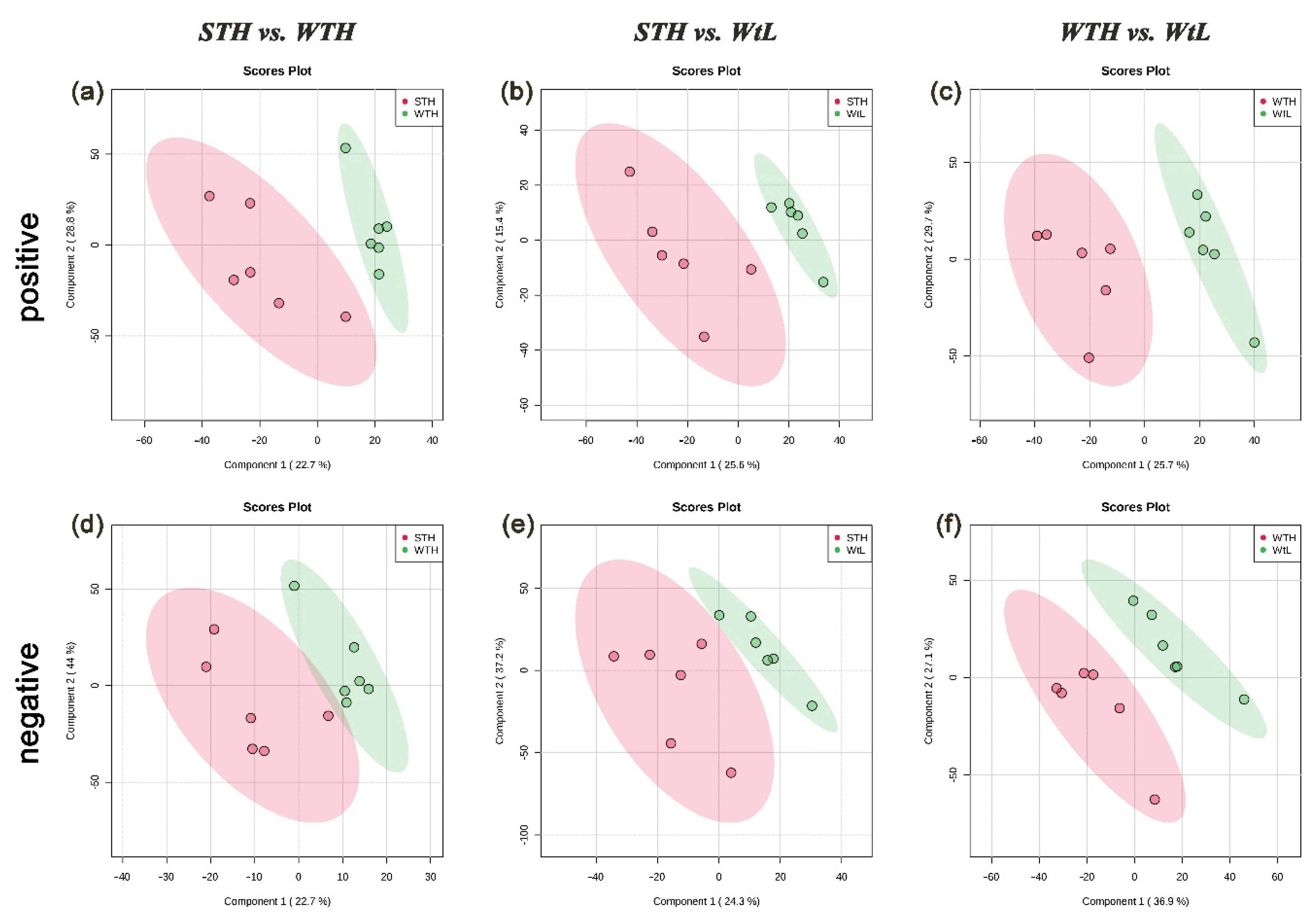
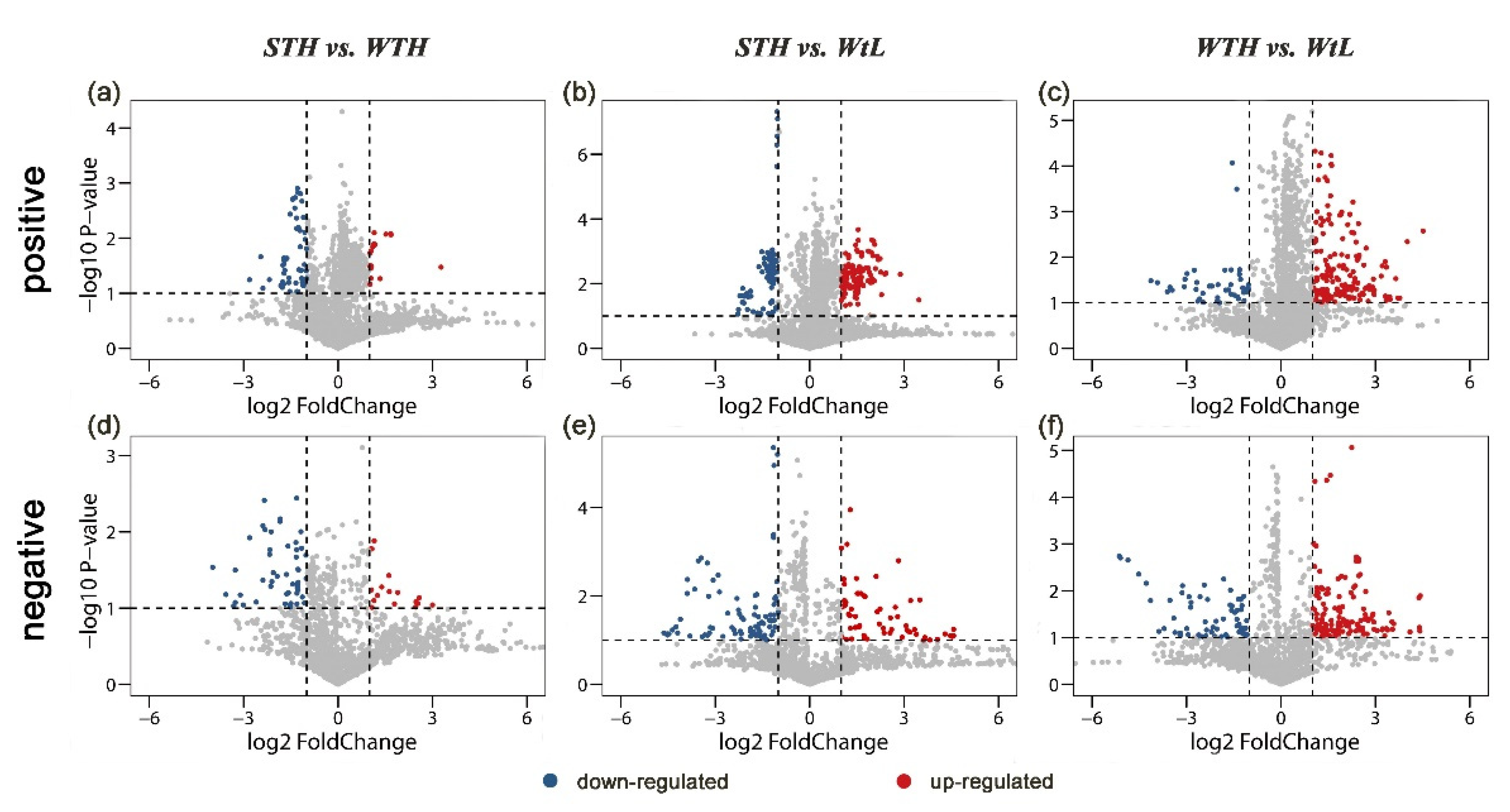

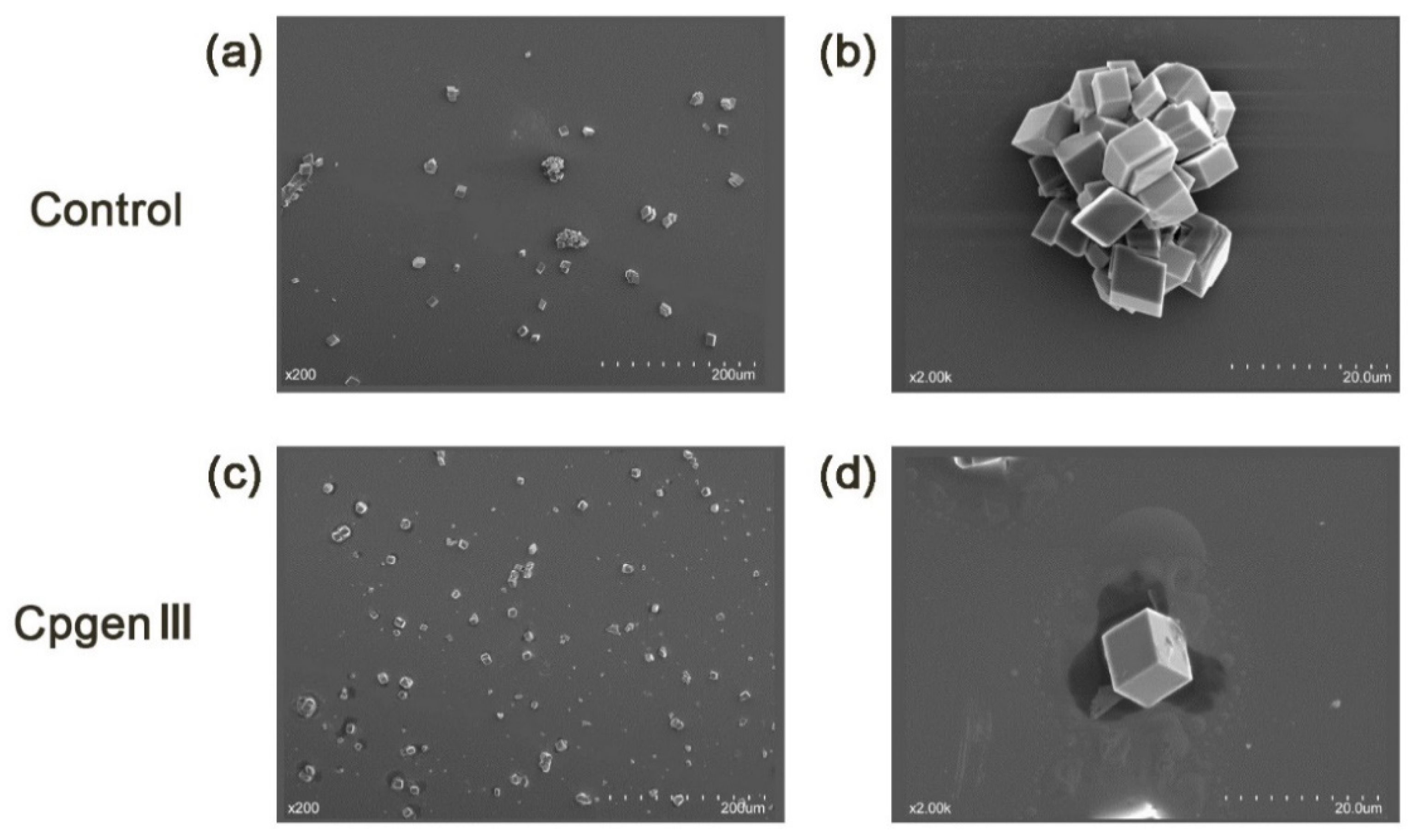
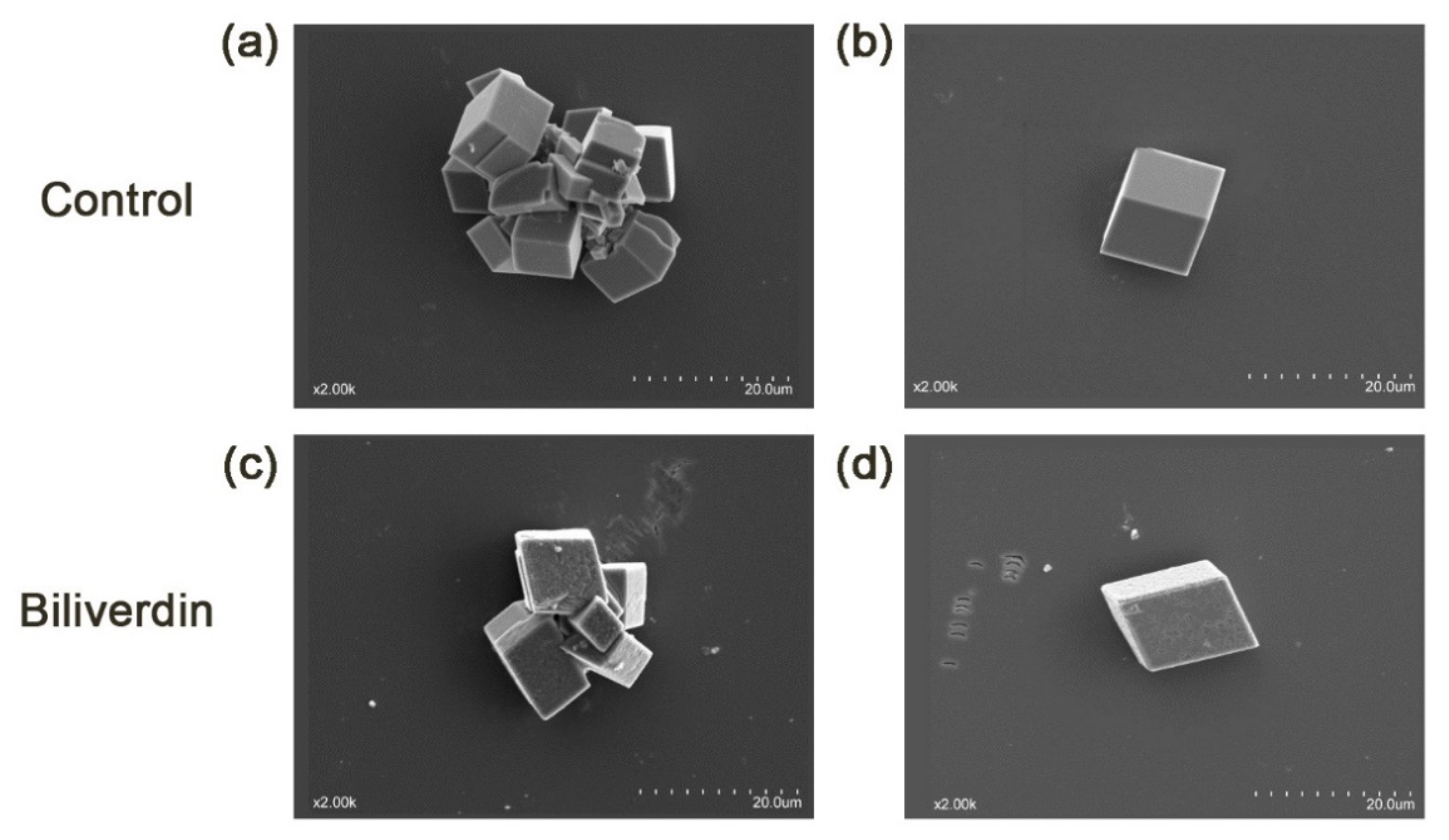
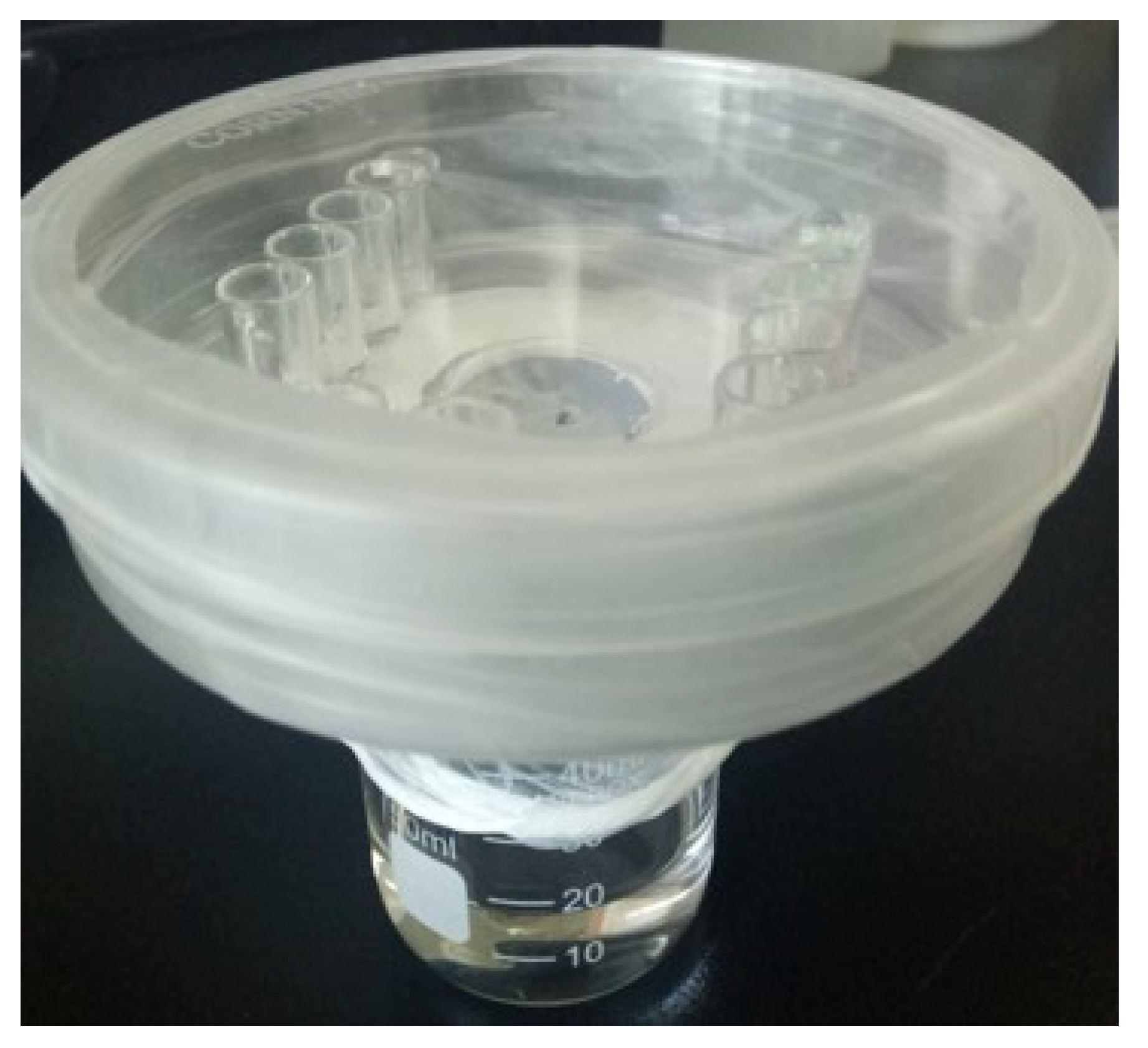
| Eggs with Strong, Thick, Heavy Shells (3 eggs/hen, 6 hens) | Eggs with Weak, Thick, Heavy Shells (3 eggs/hen, 6 hens) | Eggs with Weak, Thin, Light Shells (3 eggs/hen, 6 hens) | Population (3 eggs/hen, 183 hens) | |
|---|---|---|---|---|
| Eggshell strength (kg/cm2) | 3.531 ± 0.045 a | 2.114 ± 0.141 c | 1.692 ± 0.473 c | 2.826 ± 0.585 b |
| Eggshell thickness (mm) | 0.327 ± 0.004 a | 0.314 ± 0.021 ab | 0.257 ± 0.020 c | 0.311 ± 0.027 b |
| Eggshell weight (g) | 6.12 ± 0.270 a | 5.78 ± 0.485 a | 4.73 ± 0.369 b | 5.87 ± 0.598 a |
| Egg weight (g) | 61.29 ± 3.201 | 59.51 ± 3.175 | 57.68 ± 3.593 | 61.29 ± 4.101 |
| Shape index (length/width) | 1.31 ± 0.016 | 1.29 ± 0.032 | 1.28 ± 0.004 | 1.30 ± 0.040 |
| Pathway | Raw p | KEGG Hits | Enriched Differential Metabolites |
|---|---|---|---|
| alpha-Linolenic acid metabolism | 0.0385 | C06427, C00157 | PC(16:1(9Z)/22:6(4Z,7Z,10Z,13Z,16Z,19Z)), PC(15:0/P-16:0), PC(20:2(11Z,14Z)/P-18:1(11Z)) |
| Glycerophospholipid metabolism | 0.0445 | C00157, C00350, C04230 | PC(16:1(9Z)/22:6(4Z,7Z,10Z,13Z,16Z,19Z)), PC(15:0/P-16:0), PE(16:0/P-18:1(11Z)), PC(20:2(11Z,14Z)/P-18:1(11Z)) |
| Metabolites | Molecular Weight | Comparison Group 1 | Fold Change | p Value | Ion Mode 2 |
|---|---|---|---|---|---|
| DG(14:0/20:3(5Z,8Z,11Z)/0:0) | 591.4 | STH, WTH | 2.014 | 0.0032 | + |
| DG(18:4(6Z,9Z,12Z,15Z)/24:1(15Z)/0:0) | 699.5 | STH, WtL | 0.317 | 0.0004 | + |
| PC(16:1(9Z)/22:6(4Z,7Z,10Z,13Z,16Z,19Z)) | 804.5 | STH, WTH | 0.497 | 0.0111 | +, − |
| PC(15:0/P-16:0) | 704.5 | STH, WtL | 0.275 | 0.0003 | +, − |
| PC(20:2(11Z,14Z)/P-18:1(11Z)) | 796.6 | WTH, WtL | 2.516 | 2.79 × 10−5 | +, − |
| Verapamil | 453.3 | WTH, WtL | 4.167 | 0.0333 | − |
| Risedronate | 282.1 | STH, WTH | 0.472 | 0.0186 | − |
| Coproporphyrinogen III | 661.2 | STH, WtL | 3.088 | 0.0001 | + |
| Biliverdin | 583.2 | STH, WtL | 2.656 | 0.0001 | + |
| Ingredients | Content (%) | Nutritional Parameters | Levels |
|---|---|---|---|
| Soybean meal (43% CP) | 24.56 | AME (MJ/kg) | 11.37 |
| Corn | 63.42 | Crude protein (%) | 17.28 |
| Soybean oil | 0.5 | Calcium (%) | 3.14 |
| Coarse limestone | 8.5 | Total phosphorus (%) | 0.33 |
| Premix 1 | 3 | l-Lysine (%) | 0.886 |
| Antioxidants | 0.02 | DL-Methionine (%) | 0.281 |
| Total | 100 |
Publisher’s Note: MDPI stays neutral with regard to jurisdictional claims in published maps and institutional affiliations. |
© 2021 by the authors. Licensee MDPI, Basel, Switzerland. This article is an open access article distributed under the terms and conditions of the Creative Commons Attribution (CC BY) license (https://creativecommons.org/licenses/by/4.0/).
Share and Cite
Wang, X.; Zhu, P.; Sun, Z.; Zhang, J.; Sun, C. Uterine Metabolomic Analysis for the Regulation of Eggshell Calcification in Chickens. Metabolites 2021, 11, 575. https://doi.org/10.3390/metabo11090575
Wang X, Zhu P, Sun Z, Zhang J, Sun C. Uterine Metabolomic Analysis for the Regulation of Eggshell Calcification in Chickens. Metabolites. 2021; 11(9):575. https://doi.org/10.3390/metabo11090575
Chicago/Turabian StyleWang, Xiqiong, Ping Zhu, Zhihua Sun, Junnan Zhang, and Congjiao Sun. 2021. "Uterine Metabolomic Analysis for the Regulation of Eggshell Calcification in Chickens" Metabolites 11, no. 9: 575. https://doi.org/10.3390/metabo11090575
APA StyleWang, X., Zhu, P., Sun, Z., Zhang, J., & Sun, C. (2021). Uterine Metabolomic Analysis for the Regulation of Eggshell Calcification in Chickens. Metabolites, 11(9), 575. https://doi.org/10.3390/metabo11090575






